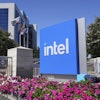If movies like Deep Impact and its superior, Armageddon, have taught us anything, it is to be wary of massive pieces of space rock that threaten our very way of life.
Luckily, people much brighter than the masses are paid to figure out ways to thwart extraterrestrial blows. Some of those people are at NASA and are investigating a proposal for a line of defense that could break apart asteroids days or even hours before a potential impact.
The defense method is called Pi - Terminal Defense for Humanity. It was proposed by Philip Lubin, an engineer at the University of California Santa Barbara, and was selected for Phase One of the NASA Innovative Advanced Concepts Program.
Pi is different from the DART mission, which is already headed toward an asteroid named Didymos B to see if it can shift the orbit by a fraction of a percent as a test. While the DART mission would be helpful for asteroids spotted from great distances, Pi’s purpose would be to be able to act on much shorter notice.
With Pi, a series of small rods would be fired at an asteroid, mimicking a shotgun blast. Ideally, the rock would break into smaller pieces that would burn up upon entering Earth’s atmosphere.
Lubin suggests the system could be deployed in orbit or on the Moon. Lubin prefers the Moon and says due to the lack of atmosphere and much lower gravity, Pi could be set up with near-infrared detection or long-range optical systems and launch in minutes.
As far as the types of asteroids Pi could protect us against, 20-meter rocks could be intercepted 15 minutes prior to impact, a 50-meter rock five hours beforehand and 100-meter asteroids with a day’s warning.
Even Apophis, the “doomsday” asteroid projected to pass by Earth in seven years with a diameter of 370 meters, could be handled with 10 days’ notice. However, if they get as large as one kilometer wide, we’d need to know 60 days before the estimated impact.






















